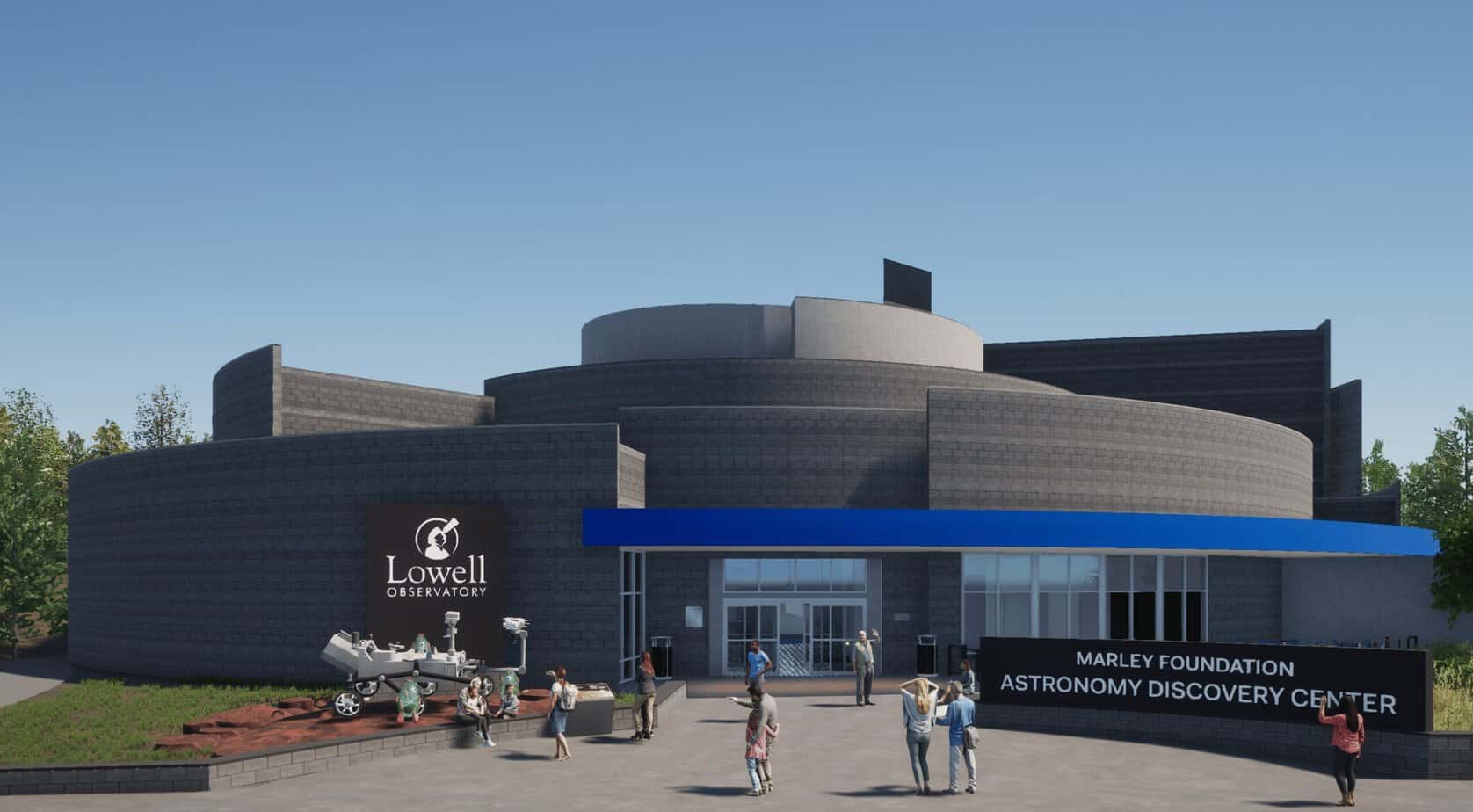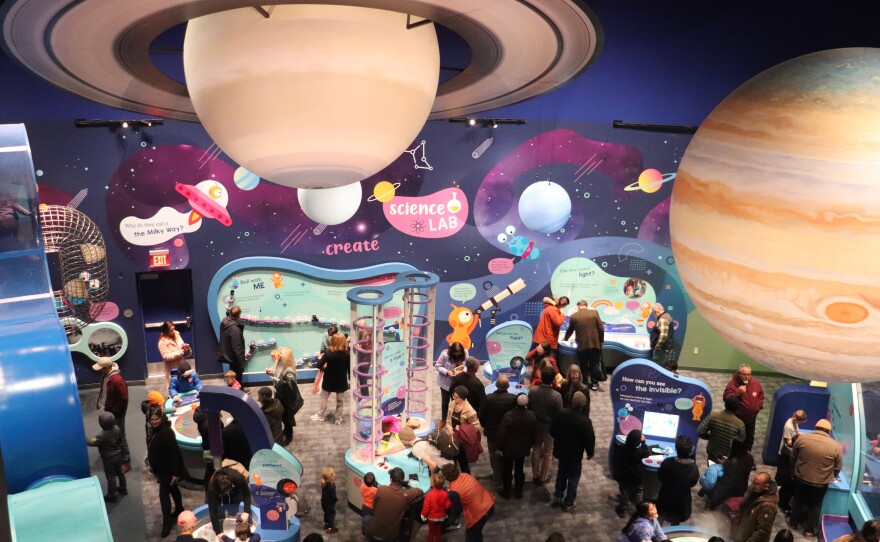Skyward
February 2025
A new dawn at the Lowell Observatory������
David H. Levy
Last November 16, the Lowell Observatory opened its new Marley Foundation Astronomy Discovery Center. I think this center represents the most significant advance in inspiring young people to enjoy astronomy in the last 44 years, since Carl Sagan’s Cosmos in 1980.
 Perched atop Mars Hill at the famous Lowell Observatory, this wonderful building is a dream. If you live in or near any part of Arizona, please plan to take your family to see this. A girl or a boy entering it is treated to a personal tour of the Universe. It begins with our small home planet, the Earth, and then moves outward past Mars, past Jupiter, and onward past the outermost planets. On the roof are telescopes, and an open-air planetarium from which one can see the real sky. Because Pluto was discovered just a few hundred meters away at this observatory, and because Lowell remains a busy center for work on Pluto, this Discovery solar system easily features nine planets.
Perched atop Mars Hill at the famous Lowell Observatory, this wonderful building is a dream. If you live in or near any part of Arizona, please plan to take your family to see this. A girl or a boy entering it is treated to a personal tour of the Universe. It begins with our small home planet, the Earth, and then moves outward past Mars, past Jupiter, and onward past the outermost planets. On the roof are telescopes, and an open-air planetarium from which one can see the real sky. Because Pluto was discovered just a few hundred meters away at this observatory, and because Lowell remains a busy center for work on Pluto, this Discovery solar system easily features nine planets.
 One of the first things I wanted to see was the solar exhibit that Tim and Carol Hunter provided. It was way up on the building’s third floor, and it was stunning. The Sun, which in earlier times was studied only in its own “white light” and in later decades in the 20th century through the light of hydrogen alpha, is now visible by spacecraft in almost too many ways to mention. From big sunspots marching slowly across the surface of the Sun, to coronal streamers and filaments sighted by spacecraft, Tim’s exhibit gives us a look at our home star we have never seen before.
One of the first things I wanted to see was the solar exhibit that Tim and Carol Hunter provided. It was way up on the building’s third floor, and it was stunning. The Sun, which in earlier times was studied only in its own “white light” and in later decades in the 20th century through the light of hydrogen alpha, is now visible by spacecraft in almost too many ways to mention. From big sunspots marching slowly across the surface of the Sun, to coronal streamers and filaments sighted by spacecraft, Tim’s exhibit gives us a look at our home star we have never seen before.
I was mentioning all this a recent meeting of the Denver Astronomical Society, One of the DAS members attending it that evening was Brad Schafer, professor emeritus at LSU but who now lives in Tucson. Casually that evening I mentioned that I had been monitoring the Sun since 1963, and he wrote to tell me that if all this is true, then I may have the longest record of solar observations of anybody in the world. More about this in a different article.
As exciting as the s Sun display was, I did want to get another look at my favorite telescope, the 13-inch astrograph telescope that Clyde Tombaugh used to discover Pluto. Where the Discovery Museum showcases the Universe as we see it now, the 13-inch brings us back to an earlier time at Lowell, where Clyde Tombaugh looked out at the solar system, opened his eyes in wonder, and discovered a new world.
It is impossible for me to visit Flagstaff without letting the passions, the emotions of a city of discovery, travel through me. Flagstaff is alive with history, and even its street lights are shaded at night to allow views of the sky. This is the place where V.M. Slipher discovered the red shift that led to Edwin Hubble’s revealing the expanding universe. And who knows what youngster, with a first look at the Discovery center, might return some day to make a further detection of a cosmic secret whose essence we cannot even imagine?
